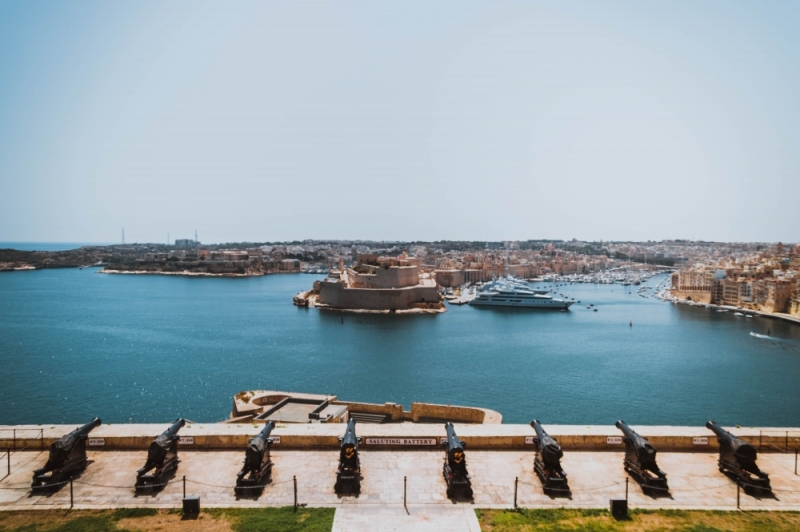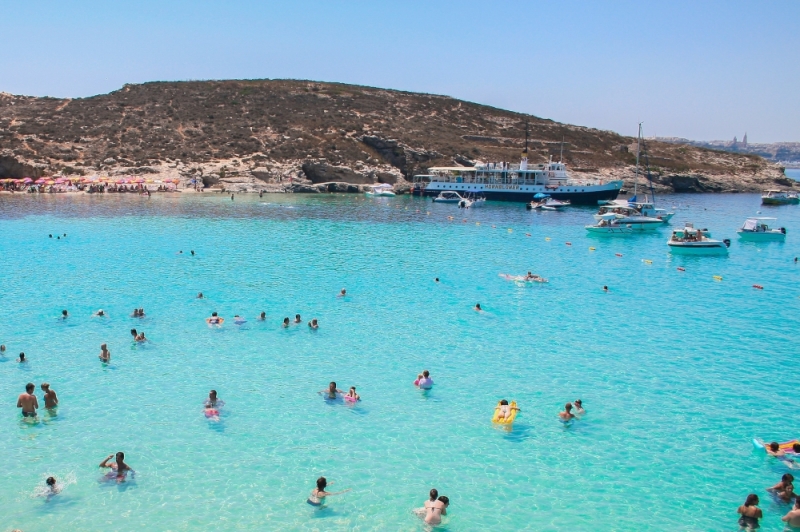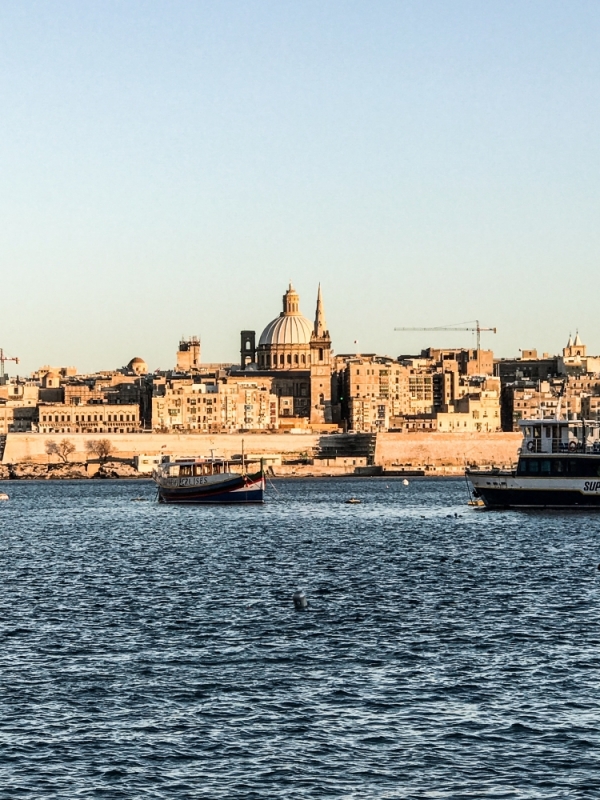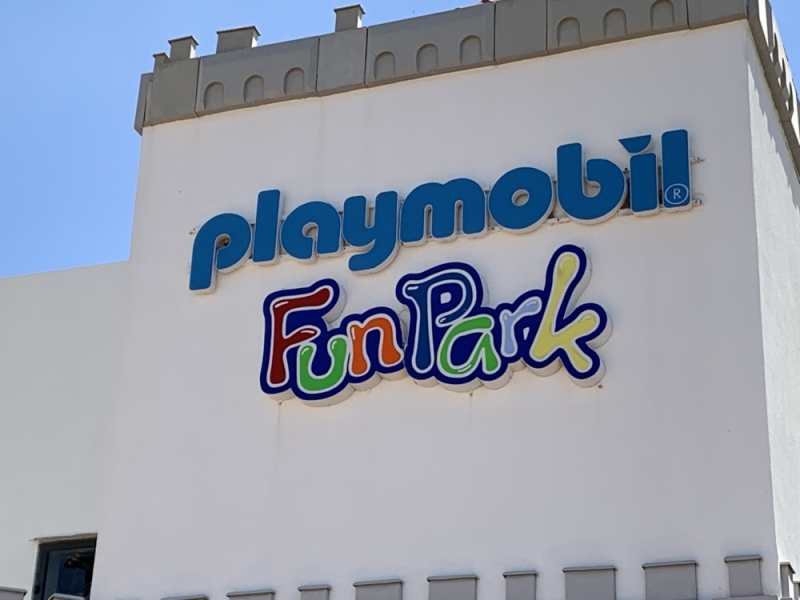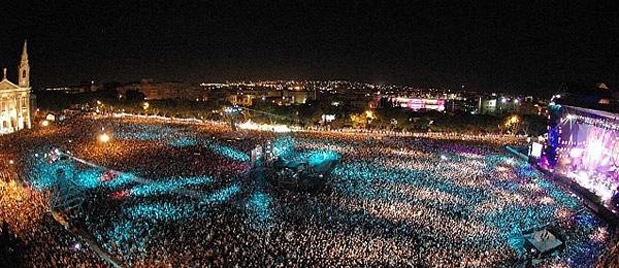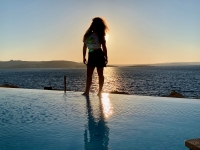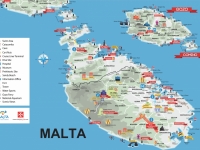Malta and its origins
Malta is internationally known as a tourist location, for leisure and above all for culture, given that in the country there are three sites declared a world heritage site by UNESCO: the capital Valletta, the Hal Saflieni Hypogeum and the megalithic temples.
An archipelago in all respects, made up of 7 islands (three major islands: Malta, Gozo and Comino; the smaller islands of Cominotto, the islands of San Paolo, plus a whole series of rocks), has gone through a golden age that it dates back to the Neolithic of which there remain mysterious megalithic temples dedicated to the goddess of fertility. Later, Phoenicians and Carthaginians, Romans and Byzantines left their traces on the islands.
In 60 BC. C. Saint Paul was shipwrecked on these islands on his journey to Rome and brought the Christian faith to Malta. The Arabs conquered the islands in 870 BC and left an important mark on the Maltese language. Until 1530 Malta was considered as an extension of Sicily: the Normans, the Aragonese and the other conquerors who dominated Sicily also ruled over Malta. It was Charles V who bequeathed Malta to the Sovereign Military Order of Saint John of Jerusalem which governed Malta from 1530 to 1798. That of the Knights was a true golden age, during which Malta became a protagonist of the cultural world of the 17th and 18th century in Europe. The artistic life of the islands was enriched with the presence of artists such as Caravaggio, Mattia Preti and Favray (and many others) who were commissioned by the knights to embellish churches, palaces and hotels.
In 1789 Bonaparte, on his journey to Egypt, wrested Malta from the Order of Knights. The French presence was short-lived as the British, called in by the Maltese to help them in the fight against the French, besieged the islands in 1800. The British ruled in this territory until 1964 when Malta became independent. The English system of administration, as well as the educational and legislative system, was adopted by the Maltese. Modern Malta became a republic in 1974 and a member state of the European Community in May 2004.
The Maltese are largely Roman Catholic, but other religious beliefs are also represented here. There are small communities of Anglicans, followers of the Church of Scotland, Adventist Church, Greek Orthodox, Jews, Methodists and Muslims. Most religious services are held throughout the day on Sunday; some churches offer services on Saturday evenings and a couple during the week (early morning or evening).
What see
The 7000 years of history of the Maltese islands and the dominations suffered are reflected in the national architecture of the country and in its collections. There are plenty of areas of culture and historical heritage to explore: the Grandmaster's Palace , a 16th century masterpiece, the " Sacra Infermeria ", which is now a fully equipped congress center, and the St. James Center for Creativity , a perfectly restored fortification where contemporary works of art are exhibited in the magnificent rediscovered spaces, on the ancient irregular walls. In these buildings, the past and the present blend into a lasting and admirable lesson in the art of knowing how to live. The arts have always played a great role in Maltese culture and continue even today, given the amount of events that constantly liven up the islands. The Museum of Fine Arts - MUZA, exhibits some magnificent pieces of art, from the early Renaissance to modern times. Both established and emerging artists are encouraged with grants and exhibitions to celebrate their efforts in public areas. Moreover, there is almost always an exhibition of some kind to visit. Theater and music are also very popular on the islands. A varied number of theaters and public places offer a large number of modern, classical and operatic music concerts. For a list of Museums and Galleries, Archaeological Sites and other places of interest, visit our Tourist Attractions page or use the Interactive Map at the top of the page.
Valletta
As already mentioned, in Malta and in the islands that surround it, there are so many things to see. Starting from Valletta , the island's capital, we suggest you visit La Cittadella , the historical part of the city. This part of the city is defined city-fortress, as there are a whole series of bastions on the sea that were in defense of the city, in the past times. There are also museums, palaces and churches dating back to the most diverse historical periods, from the 14th century, passing through the Baroque, up to Modernism. The Co-Cathedral of St. John, dedicated to St. John the Baptist , patron of the Knights of the Order of Malta was the first seat of the Knights. It is a work dating back to the second half of the 16th century, when Malta was under the dominion of Charles V and represents the most important expression of Baroque art. The cathedral houses 2 works by Caravaggio, of inestimable value. Staying in Valletta, we suggest you visit the Barrakka gardens, beautiful public gardens (upper and lower part) that have a magnificent view, from which you can admire the Three Fortified Cities (Birgu, Senglea and Cospicua). The Three Fortified Cities are cities rich in palaces, fortresses and ramparts that tell the story of the Knights of Malta, who founded Senglea and Cospicua, while Birgu already existed in the Middle Ages. The cities are called "fortified" because they have a wall called the Cottonera Line. Birgu is very special and every year there is an event, the Birgufest, a long-awaited, very romantic and charismatic party, as the city is lit only by candles, distributed throughout the city. Continuing the historical tour, you should definitely visit M'dina , the ancient capital of Malta, also known as the city of silence. M'dina has an ancient historical center, and the first findings date back to the fourth millennium BC C., then, were then the Phoenicians who, around the year 1000 a. C., began to raise the city walls, interrupted by two access gates, the Main Gate and the Greek Gate. If you want to get into the full of history, we recommend that you come to M'dina in the spring, when with the Medieval Festival, the city goes back in time.
Discount
After M'dina, another place not to be missed is Rabat , the city where the ancient Maltese noble families resided. Rabat has beautiful historical and archaeological sites, including the Caves of St. Paul , where tradition has it that St. Paul arrived there after the shipwreck, on his journey to Rome. In Rabat it is also possible to shop in the many local craft shops, located in the downtown streets. If you want to go back even further, in the history of Malta and the world, you should visit the megalithic Temples of Malta and Gozo. These are six megalithic structures, dating back to 3,600 a. C. (therefore older than the Stonehenge complex in the United Kingdom), which UNESCO has declared a World Heritage Site. The oldest complex is Gigantia, located on the island of Gozo. Its name derives from the fact that the temples of its structure are so high as to suggest that they were erected by giants. In Malta, there are the Mnajdra and Hagae Qim temples. These two temples have been erected perfectly aligned, so that the sun's rays pass us perfectly during the autumn and spring equinoxes.
Leaving aside the historical itineraries, we cannot forget the wonderful landscapes of Malta. If you are in Gozo for monolithic temples, you must also visit the beaches of Gozo . The most famous is the red beach of Ramla where, according to Homer, there is also the entrance to the cave where the nymph Calypso lived, who kept Ulysses prisoner, in the Odyssey. Another natural beauty of Gozo was Dwejra's Azure Window which, following erosion, collapsed during a storm in March 2017. The Azure Window was a very important and famous natural heritage and the news of its collapse went around of the world in no time. Some beaches in Gozo are difficult to reach by land, therefore, we advise you to book a boat tour so that you can reach them by sea. If you decide to take a boat tour, we recommend that you book one of our tours, which will also allow you to see Comino. Comino is the smallest of the three large islands of the Republic of Malta and is located right in the center, between Malta and Gozo. It is a very small island with only 3 inhabitants and is also a wildlife reserve for birds. Comino is famous above all for its bay, Blue Lagoon , a small bay, rocky and wild, where the sea is so transparent that you can see the little fishes and the seabed. Blue Lagoon or Blue Lagoon, in Italian, has a beautiful underwater fauna, for this reason, we recommend snorkeling or, if you are prepared, diving. If, on the other hand, you prefer water sports, we recommend the Paradise Bay which is located in the north of the island of Malta, in front of Comino, with sandy beaches and clear waters.
Popeye Village
Finally, if you are traveling with your children, an obligatory stop on your journey will be the Popeye Village (The Popeye Village) and the Playmobil Fun Park. The Popeye Village was the set built to shoot the Popeye movie, wanted by Walt Disney. Subsequently, after the film had finished shooting, the village remained there and became, in addition to being a museum, also an amusement park. The park is perfect for children, who in addition to seeing shows and doing tours of the various attractions, can meet the characters of the comic: Braccio di Ferro, Olivia and many others. The Playmobil Fun Park is, instead, the theme park inspired by Playmobil games and is suitable for children and all Playmobil fans. The park is located near the Playmobil factory and has an outdoor area where there are attractions, like in the most classic amusement parks; the covered area is dedicated to playing with the characters and landscapes of Playmobil. There is also a shop where you can buy Playmobil toys, a restaurant and a coffee shop where you can relax while your children play.
Movida and entertainment
Nightlife: The islanders' approach to life is the typical Mediterranean approach: enjoy it and celebrate as much as possible. Nightlife on the islands is always very active. Although at certain times the calendar of events is a bit sparse, there are still dozens of places to visit and excellent wine bars or top quality restaurants to try. On the islands there are many cultural events such as the Summer Malta Arts Festival, the Valletta Baroque Festival, the Opera Festival, the Choir Festival and the International Jazz Festival in July. Important concerts (in the time of the likes of Sting, Roger Waters, Sir Bob Geldof, Elton John) are organized throughout the summer. These concerts attract huge crowds of tourists and locals. The Maltese islands have also become an important center for disco-lovers. World-famous DJs (Paul Oakenfold, Erick Morillo, Magda, Tiesto, Van Heill) perform the weekend throughout the year. The locals are always full of life and there are always plenty of places to go, from big nightclubs to quieter places. The highest concentration of discos and clubs is in Paceville, along the coast near San Giuliano. Classical music is very popular and there are regular organ concerts in baroque churches. Moreover, orchestral concerts, solo concerts and operas are regularly organized in magnificent historical places. That of the bands is one of the most popular, important and respected traditions of the people. In every city and in every village there is at least one band. The most important event of the year for the bands is the parish festival, always accompanied by large fireworks, food and lots of fun. Theater is an important part of local cultural life. The National Theater in the Baroque style of the 18th century is the ideal place for performing arts. If you love Shakespeare the splendid baroque gardens of the building of Sant'Antonio is the right place to enjoy it in the open air in the month of July. Then, for children, the "Christmas Pantomime" is an unmissable event. There are also many other ways to have fun at night. Challenge your luck in a casino, go see a movie (successful movies, niche art films, re-releases and films in languages other than English) or follow the example of the Maltese and dine al fresco in restaurants located in one of the romantic palaces of the port.
Family Fun: The Maltese Islands are great for families. Malta, Gozo and Comino offer a wonderful setting for a vacation in which parents and children can share the joys of discovery, experience the thrill of an action-packed holiday or simply savor the simple pleasures of relaxation. All in a safe and peaceful environment to which few other destinations can compete. Summer in Malta is synonymous with outdoor living. There is no shortage of beaches to choose from: some fully developed resorts that offer all the necessary services, others more secluded, more peaceful and more pristine. And, if going to the beach seems too big a challenge, then you can always choose to spend the day by the hotel's pool. However, never forget to put plenty of sunscreen, especially for the little ones. But Malta is much more than sun and sea. With a rich history dating back thousands of years, the islands offer endless opportunities to visit and explore. Prehistoric temples, Roman ruins, medieval castles and walled cities, formidable forts, splendid churches and chapels along the way ... these are just some of the historical attractions that families can visit for that extraordinary experience of traveling in the past. Some of these places are places of colorful historical re-enactments, competitions involving dozens of animators dressed as soldiers, nobles and ladies, knights in shining armor, with their swords and spears, muskets and canons. Not to be missed. Throughout the year, Malta is alive with events, many of which are perfect for the whole family: outdoor concerts and musical events, arts and crafts, sports and activities, exhibitions and shows, parties and carnivals and much more. Then there are museums and attractions to visit, theme parks and movie sets, open-top tour buses, tourist trains and harbor cruises, horseback riding, mountain bike tours and tracks and hundreds of other fun things to see and do together.
Climate, Curiosities and Advice
Climate: Malta's climate is strongly conditioned by the sea and is typical of the Mediterranean. The islands are often sunny, for a daily total of hours that can vary from an average of 5-6 hours in the middle of winter, to a 12-hour during the summer. Winters are mild, with short periods occasionally colder due to the Central European winds that blow from the north and north east. Summer is hot, dry and very sunny. Summer temperatures during the day are often mitigated by fresh sea breezes; in spring and autumn, however, the very hot African wind sometimes leads to higher temperatures (out of season) and humidity. This wind is the Scirocco or, in Maltese, Xlokk: it is a wind that blows over Greece and Italy; in Malta the air is generally drier due to the short distance that separates it from the African coast. The average annual rainfall is low, around 568 mm, and the duration of the dry season, during the summer, is longer than that of neighboring Italy. Bathing is often possible even during the 'winter' months, and the peak of the bathing season can last until late October.
Curiosity: Malta won its independence from the United Kingdom only in 1963 (National holiday every September 21st) and first of all switched to the metric system, but still today, however, it is guided to the right. The official language is the Maltese (descended from Arabic, but integrated over time by Greek, Italian and English words) and English, but it is not difficult to find people who also speak a good Italian.
Malta has also been the scene of many films and TV series, including Game of Thrones, shot right near the Azure Window in Gozo (obviously in the years before the collapse). It is here that the marriage between Khal Drogo and Daenerys Targaryen was celebrated.
Tips: Malta is not very big and it runs quite easily. A good solution, certainly the cheapest, is with buses, which serve the main tourist destinations. Efficient and not costossisimo is the taxi service, comfortable, fast and to be taken into consideration especially if you are traveling as a group. The most adopted solution, especially if you stop a few more days, is the car rental at very affordable costs, remembering, however, that in Malta you drive right. If you are a couple, do not neglect the idea of renting a comfortable and cheap scooter.


